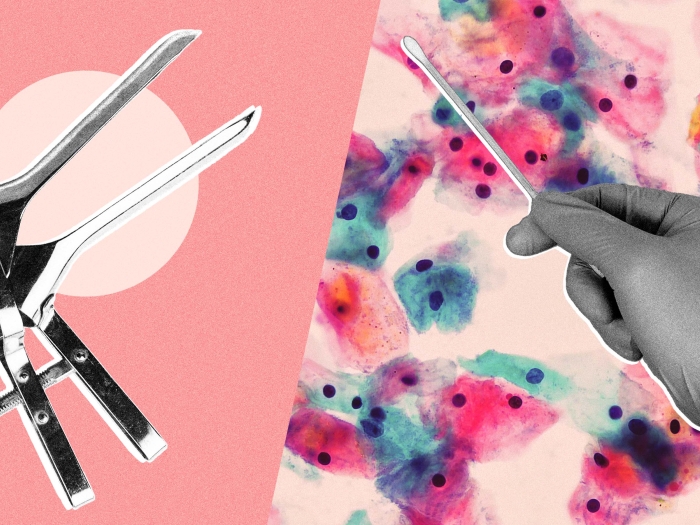Michigan Medicine ophthalmologists create a scalable algorithm for triaging appointments during the pandemic
5:00 AM
Author |

At the beginning of the pandemic in March, the American Academy of Ophthalmology recommended ophthalmic practices limit care to only urgent or emergency ocular cases.
But what's urgent and what isn't?
For Joshua Stein, M.D., M.S., an ophthalmologist at the Michigan Medicine Kellogg Eye Center who sees patients with glaucoma – a group of eye diseases causing optic nerve damage that can lead to vision loss – the stakes can be high in either of two situations.
Does he see the patient in clinic at their regularly scheduled appointment because their glaucoma is severe, but put the patient and clinical staff at potential risk of exposure to the virus? Or does he postpone the visit because the patient has factors that make them at higher risk for serious COVID-19 complications, but risk the patient's glaucoma progressing to a point of irreversible vision loss?
Stein and a team of U-M researchers came up with a way to create an algorithm that weighed the risks and benefits of postponing care for U-M's patients with glaucoma.
The algorithm, published in JAMA Ophthalmology, helps physicians determine the best course of care based on a patient's glaucoma severity and high risk factors associated with COVID-19 complications.
The formula helps clinicians put patients in one of three risk tiers, making it easier to know what appointments can be safely rescheduled as well as what semi-urgent appointments should be prioritized now that clinics have reopened for usual services.
"Glaucoma can be relatively asymptomatic early in the disease course, so the patient may not know that permanent damage is occurring when they aren't receiving care," Stein says.
However, glaucoma patients are typically of older age and have underlying medical issues, making them susceptible to serious illness from the coronavirus.
Glaucoma can be relatively asymptomatic early in the disease course, so the patient may not know that permanent damage is occurring when they aren't receiving care.Joshua Stein, M.D., M.S.
The study
The algorithm would consider these competing risks and be applied to a large number of patients to make the decision-making process easier.
"The algorithm needed to be easy to implement, given the urgency of the situation, and scalable and flexible enough to accommodate changes in guidance from the Centers for Disease Control and Prevention," Stein says.
Using a data repository of more than 1,000 patients with previously scheduled appointments between March 16 and April 16, the research team began to give each patient two scores.
The glaucoma severity score considered the severity of the patient's glaucoma, stability of their disease and likelihood of their glaucoma worsening quickly. High risk factors could include patients with very high eye pressures, those with considerable pre-existing loss of their peripheral vision and those who recently underwent glaucoma surgery, Stein says.
Similarly, the team compiled a list of risk factors that would increase a patient's likelihood of morbidity from COVID-19. This second score, high risk factors for COVID-19 illness, considered factors such as being 65 years of age or older, being pregnant or having recently been pregnant, and having a pre-existing chronic health condition like diabetes or cardiovascular disease.
If the glaucoma score is a negative value, that means the patient is at high risk for serious glaucoma progression and should keep their appointment. If the COVID score is negative, that means the patient has few significant risk factors for COVID-19 morbidity.
These two scores added together result in a total score for each patient. The higher or more positive the score is, the more confident the clinician can be in postponing a patient's upcoming appointment without the patient having serious worsening of their glaucoma. Using this tool to assess risk, researchers found that an overwhelming majority of patients would have appointments postponed and rescheduled.
As clinics continue to fully reopen, prioritization of appointments will help maintain social distancing efforts, minimize clinic wait times and increase clinical efficiency and safety overall, Stein notes
But while this tiered system is helpful in decision-making for a large group of patients, it's important to consider a patient's personal circumstances as well.
"A patient's travel time may be relevant, as well as whether they live in a nursing facility or have a caregiver who would be at high risk of serious COVID-19 complications," Stein says.
Even though this algorithm was created around a particular eye condition, a similar algorithm could be developed by researchers to triage appointments for another condition, ocular or not, according to Stein.
"This study shows that by leveraging a large data sample, it's possible to create an algorithm that carefully considers for each patient, based on their circumstances, the benefits and risks of receiving care during or after a pandemic," he says. "We owe this consideration to our patients, who rely on us for safe care of the highest quality."
Other study authors include Nikhil Bommakanti, M.D., Yunshu Zhou, M.S., Joshua Ehrlich, M.D., M.P.H., Angela Elam, M.D., Denise John, M.D., Shivani Kamat, M.D., Jared Kelstrom, M.D., Paula Anne Newman-Casey, M.D., M.S., Manjool Shah, M.D., Jennifer Weizer, M.D., Sarah Wood, O.D., Amy Zhang, M.D., Jason Zhang, M.D. and Paul Lee, M.D., J.D.
Paper Cited: "Application of the Sight Outcomes Research Collaborative Ophthalmology Data Repository for Triaging Patients With Glaucoma and Clinic Appointments During Pandemics Such as COVID-19," JAMA Ophthalmology. DOI: 10.1001/jamaophthalmol.2020.2974

Explore a variety of healthcare news & stories by visiting the Health Lab home page for more articles.

Department of Communication at Michigan Medicine
Want top health & research news weekly? Sign up for Health Lab’s newsletters today!





